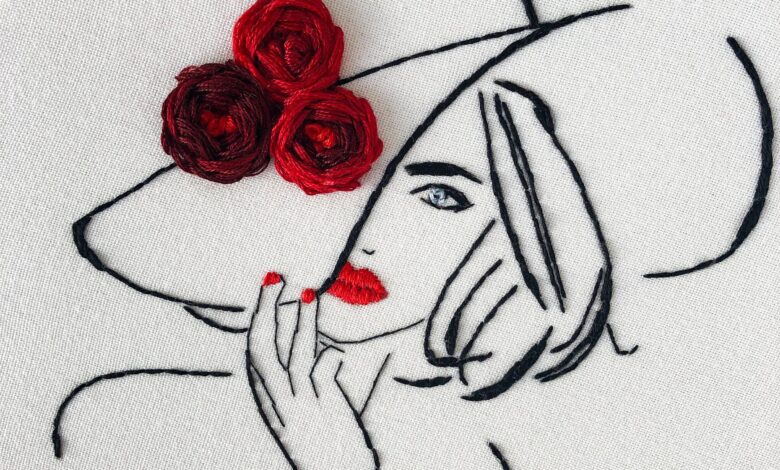Image to PES File Conversion for Embroidery Machines

Embroidery transforms images into vibrant, stitched designs, adding a professional or personal touch to clothing, accessories, and gifts. For embroidery machine users, the PES file format is a popular choice, especially for machines like Brother, Pfaff, or Baby Lock. Converting an image into a PES file—known as digitizing—creates a stitch-ready file that guides your machine to produce clean, accurate results. Whether you’re a crafter making custom t-shirts or a business branding uniforms, mastering this process saves time and delivers stunning embroidery. This guide walks you through the steps for image to PES file conversion, making it easy to bring your designs to life.
Why Convert Images to PES Files?
PES files are widely compatible with many home embroidery machines, particularly Brother and Baby Lock models. They store detailed stitch instructions, including types, directions, colors, and density, ensuring your image stitches out with precision. Unlike a regular JPEG or PNG, a PES file is tailored to your machine, preventing errors like distorted designs or thread breaks.
This process lets you turn any image—a logo, monogram, or artwork—into professional embroidery for fabrics like cotton, denim, or knits. It’s perfect for creating consistent branding or personalized gifts without outsourcing. By learning to convert images to PES, you gain creative control and save on digitizing costs.
Tools You Need for Conversion
Start with the right tools to make the process smooth. A reliable computer runs digitizing software efficiently, and a graphics tablet can help with detailed tracing, though a mouse works fine for beginners.
Digitizing software is essential. Free tools like Ink/Stitch, an Inkscape extension, support PES files and are great for simple designs. Paid programs like Wilcom EmbroideryStudio, Hatch Embroidery, or Brother PE-Design offer advanced features like stitch optimization and color matching. Embrilliance Essentials is a beginner-friendly, affordable option. A vector editor like Adobe Illustrator or CorelDRAW helps prepare images for cleaner results. You’ll also need a USB drive or direct connection to transfer PES files to your machine.
Preparing Your Image for Conversion
Before digitizing, prep your image for the best results. Ideally, use a vector file (SVG or AI) for sharp, scalable lines. If you have a raster image (PNG or JPEG), ensure it’s at least 300 DPI to avoid pixelation. Open the image in Illustrator or CorelDRAW, simplify complex elements like tiny details or gradients, and save as an SVG. This step ensures your image is ready for digitizing, reducing stitching errors.
Step-by-Step Guide to Converting an Image to PES
Follow these steps to digitize your image into a PES file. The process works for most embroidery machines that support PES, like Brother or Pfaff.
- Import the Image: Open your digitizing software and load the SVG file. Resize it to fit your machine’s hoop, like 4×4 inches for small designs or 5×7 inches for larger ones.
- Trace the Image: Use bezier or auto-trace tools to outline shapes. Ensure smooth curves for text or patterns to create clean stitch paths.
- Assign Stitch Types: Apply satin stitches for borders or text under 1cm, fill (tatami) stitches for larger areas, and running stitches for fine details. Set density around 0.4mm for most fabrics.
- Add Underlay Stitches: Include zigzag underlay for stretchy fabrics or edge-run for stable ones to prevent shifting during stitching.
- Set Stitch Direction: Align stitches with the image’s flow, like curving with a logo’s shape, to enhance texture and reduce distortion.
- Choose Colors: Match threads using the software’s chart, referencing brands like Isacord or Madeira. Plan stitch order to minimize thread changes.
- Adjust Pull Compensation: Increase compensation by 0.2-0.4mm to account for fabric stretch, keeping the design true to size.
- Preview the File: Run a stitch simulation to spot jumps or overlaps. Adjust paths or density as needed.
- Save as PES: Export the file in PES format, confirming compatibility with your machine. Check hoop size and stitch count limits (e.g., 100,000 stitches for some models).
- Test the File: Transfer the PES file via USB or direct connection. Stitch it on scrap fabric to verify tension, alignment, and quality.
This takes about 20-30 minutes for a simple image. Start with bold designs and progress to intricate ones as you gain confidence.
Tips for Flawless Conversion
Make your PES files shine with these tips. Use vector images for the sharpest results—raster images can blur when scaled. Match stitch density to fabric: looser (0.5mm) for knits, tighter for cotton. Minimize jump stitches by planning efficient paths to save time. Test designs on fabric matching your final project to catch issues like puckering. If an image has tiny details, simplify it to ensure clean stitching. These habits lead to professional embroidery.
Common Challenges and Fixes
Conversion can hit snags, but they’re easy to fix. If designs distort, adjust pull compensation and test on similar fabric. Thread breaks often stem from high density—lower it to 0.5mm in dense areas. Blurry details? Simplify small text or use running stitches. For color mismatches, use a physical thread chart. If the machine rejects the file, verify the PES version and hoop size match its specs. Testing early prevents wasted materials.
Advanced Techniques for Unique Designs
Once comfortable, try advanced techniques. Add 3D puff effects with foam underlays and wide satin stitches (4-6mm) for a raised look, if your machine supports it. For gradients, layer fill stitches to mimic shading. Appliqué adds fabric layers for texture, reducing stitch counts for large designs. These methods create dynamic embroidery but need practice and testing.
When to Hire a Professional
DIY conversion is great for simple images, but complex designs or bulk orders may require experts. Services like Absolute Digitizing or Cool Embroidery Designs create PES files optimized for various machines, handling intricate patterns or tight deadlines. Look for USA-based providers with strong portfolios, fast delivery (24-48 hours), and revisions. Outsourcing lets you focus on stitching while pros perfect your files.
Conclusion
Image to PES file conversion opens up endless possibilities for creating custom embroidery with your machine. With the right tools, a clear process, and pro tips, you can turn any image into a stitch-ready file that looks professional. Start with simple designs, test thoroughly, and explore advanced techniques to elevate your work. Whether you digitize yourself or hire experts for complex projects, your embroidery will impress. Grab your software, fire up your machine, and start converting images to PES files today for designs that stand out on any fabric.




